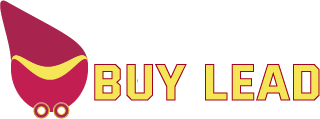Well, you might be surprised at how far technology has come in the field of machine learning and artificial intelligence (AI). Since AI is already automating parts of our existing processes that were once time-consuming and manual, it was bound to foray into the world of art. In fact, AI has now started impacting artistic expressions like music, drawing, and writing, things that were previously thought to be explicitly the domain of human beings.
But what exactly is AI?
AI implies a machine’s ability to perform country email list tasks that normally require human effort. It has many applications in our day-to-day lives, such as intelligent machines, language processing, voice recognition, and computer vision.
AI algorithms are primarily built using special software and hardware tools. Engineers use programming languages such as Java, Python, and R for creating AI-based use cases and solutions.
AI algorithms collect high quantities of training samples and analyze them looking for patterns and correlations. Then they use that information to build predictive models. These predictive models can then take steps to complete specific tasks. For example, a bot equipped with enough information can spot and categorize items in photographs.
History of computer programming and art
Many artists in the past have used computer programs to help their art. It all started in 1972. A designer by the name of Harold Cohen created the first computer program that could assist his artistry. The software was able to illustrate designs based on the programmer’s specifications and add finishing touches to his old designs. The program was called AARON.
How’s AI affecting art today?
AI actually accentuates an artists’ marketing strategy: types and stages of formation work rather than making it outdated. Companies like Celsys and Adobe are now integrating AI elements into their digital design tools. One of the major examples of that is Adobe Sensei, an optimization tool that potentiates the Adobe suite by helping users make photo edits, check the stock footage, reframe videos, and overall speed up the design process.
Tools like this allow the artist to work on their creativity and artistry rather than focus on art creation’s dull aspects. For example, machine learning algorithms can help frame video to specific functions and work on block filling specific canvas areas.
Additionally, engineers are now working on AI algorithms that “learn” a particular aesthetic style (by examining millions of photos). The algorithm then attempts to create new pictures that follow the principles it has acquired by studying the previous data.
Popular examples of AI used to create art
An AI bot can be trained to write scripts. Here’s an example of a bot that was made to watch 1,000 hours of Batman movies and then tasked to write its own script about the caped crusader. The final result is hilarious.
Algorithms known as generative india number list adversarial networks (GAN) have been in the news recently for creating AI-generated videos and images. These were first used in 2014 by computer scientist Ian Goodfellow.
An artist may input a random sample list of photos into a machine learning algorithm. The algorithm creates a framework of manipulable images and uses it to create a new video frame. The artist can then use these video frames in their own settings to create an entirely different image or video. This technique is also called deepfake in popular media.
